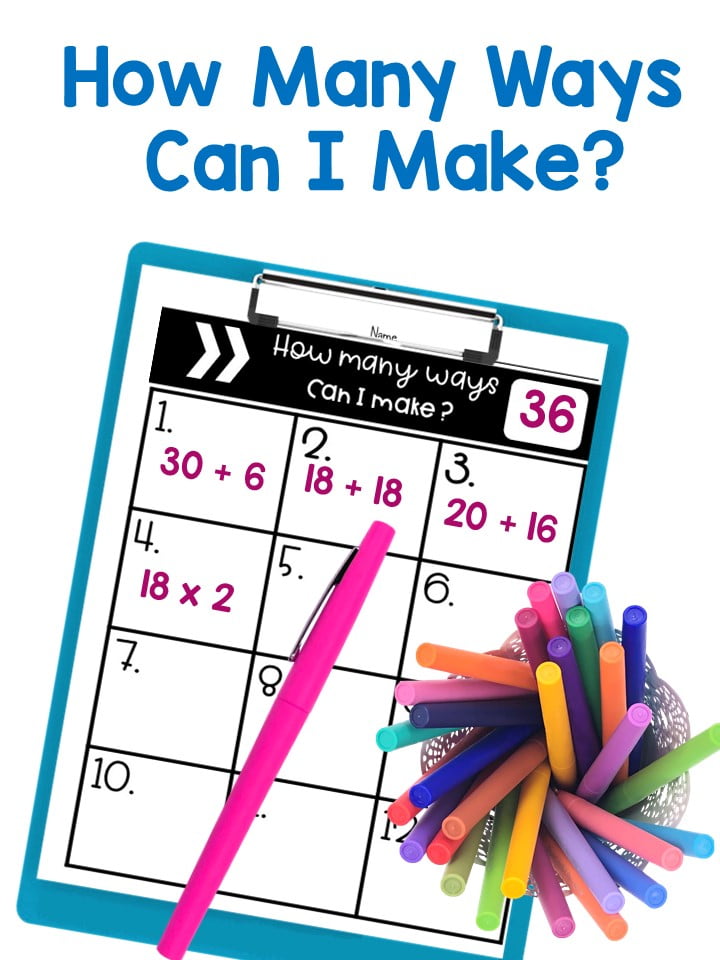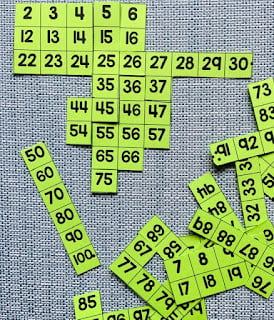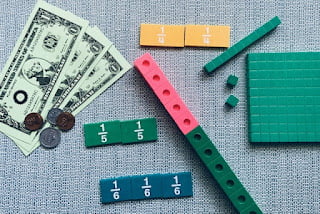Math confidence is at an all-time low!
In a recent poll of students, math was the subject that was hated the most. It received a whopping 40% of the votes for all the basic subjects! I believe this is because some students struggle in their early years, and the foundations were not set. Since math builds on itself so extensively, those students lacking in number sense, if not helped, will continually struggle, and end up with feelings of embarrassment over their math ability. So, what can we do to prevent this?

1. Decomposing Numbers
How many ways can I make___?
The ability to decompose numbers proves that students understand the size of numbers and promotes their ability to be flexible in problem-solving and cultivates number sense and math confidence.
Have you ever been driving in an area that you weren’t familiar with and then suddenly were faced with a detour? OK, I might be showing my age here a little because this was more of an issue before the invention of the GPS. However, I used to go into a slight panic when I saw those detour signs. Now where do I go? And let me tell you, they didn’t always show you another way, but rather, just that you can’t go the way you intended.
Students develop great math confidence when they know multiple ways to get to a solution. This is what decomposing numbers does for a student! It develops fact fluency (without the drill and kill, by the way) and reinforces the size of the numbers. It also helps them figure out which numbers easily pair together. Students who decompose often are very flexible in their math thinking and frequently more advanced at mental math.
Pictured above is a simple activity that can be used as a bell ringer. It can be used with any number, even fractions and decimals, and, based on the level of the students, you can add any operation to it. When I use this, I encourage the kids to come up with their most INTERESTING answers.

2. Use number sense routines daily to improve math confidence.
What is number sense? Have you ever been in a place where someone was speaking a foreign language and you were completely lost? You don’t understand what they are saying, you certainly can’t relate to any of it, and you can’t connect what they are saying to anything meaningful.
This is very similar to what our kids experience in math class when they have very little number sense.
A lack of number sense also contributes to kids developing negative feelings toward math. Number sense is a person’s ability to understand, relate, and connect numbers. So, what can we do about it? Add routines to your math student that develop number sense. It will pay off big! One way to do this is with 100s chart activities.
There are many activities that can be done with a simple hundreds chart, but one of my favorites is just to have the kids make observations about the patterns on the chart.
I always tell my students that they become real mathematicians when they start to see patterns in math. When they “discover” the patterns on their own, they take ownership of them and are much more likely to grasp them and, in turn, remember them. This has quite an impact on math confidence.
Another favorite is to simply cut up a 100s chart (cardstock works best for this) and have kids put together the puzzle. It forces them to look for the patterns in the chart and use deductive reasoning. And an added bonus…it is FUN! For further number sense routines, please see my previous blog post: • 3 routines guaranteed to develop number sense

3. Introduce New Concepts with Manipulatives to Build Math Confidence
Math ideas need to start with concrete in order to make sense for most students. Manipulatives allow for a “discovery” type of learning.
Regrouping, formally known as carrying, for example, is a very abstract concept. It definitely should not be taught until the child can grasp the “why” of it. So, when teaching how to add 44 plus 65, I would get out my doc cam and first introduce this with 4 rods and 4 units; and add to it, 6 rods and 6 units.
Then I would show all the units (10) and say something like, “Wow! That’s a lot of units! Can I show this in an easier way?” I would guide the students to see that 10 units is the same as 1 rod. The students would then notice that they now have 11 rods. At this point, I would do the same thing with the 11 rods asking them if there is an easier way to show this. Ten of those rods can be exchanged for a flat (1 flat = 10 rods).
This process may need to be repeated several times before some kids will get comfortable with the idea of changing the place value. Then when carrying is shown, relate it back to the blocks until it makes sense to the students. But, manipulatives are the key to making abstract concepts in math more concrete; and should be used often, especially when introducing Money, Fractions, Patterns, Decimals, Geometry, and more.

4. Normalize, and even celebrate, mistake-making!
Have you ever demonstrated a math problem for the class and made a mistake? I have!! In fact, I do it more often than I’d like to admit! Probably because my ADHD brain is noticing the student in the back who is off task; AND remembering that we need to leave for specials in a few minutes; all while I’m trying to work the problem. Super embarrassing, right?
Well, I used to get really uncomfortable, but then I realized that I was modeling my feelings in front of my students. If I want my kids to be okay with making mistakes and learning from them, then I need to do the same.
So, when my students respectfully point out a mistake, I take it in stride; model learning from it; and sometimes even make the sound effects of a synapse firing, to reinforce the valuable thing that is happening. We get a good laugh, and the learning continues.
If your kids are not embarrassed to make mistakes, it unlocks their ability to be resilient and keep working in the face of challenges and impacts math confidence.
So, to recap, developing number sense in your students is totally worth the small amount of time investment each day needed to work on these. Decomposing numbers, number sense routines, introducing new concepts with manipulatives, and normalizing mistakes, will go a long way to developing deep-thinking math students, rather than rote memorizers. Watch their math confidence soar!
What has worked for you to develop math confidence in your struggling students?
More About This:
Let’s Connect:







0 Comments